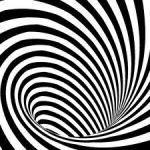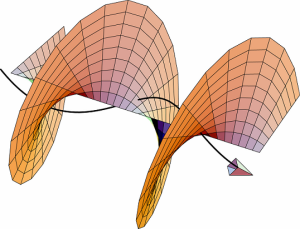 In some of my recent postings, I wrote about the limits of the physical layer and what that means for the future of wireless communications systems. Here, I like to mention new research that has promise of increasing the capacity of the physical layer. This new work is based on exploiting a property of electromagnetic waves heavily investigated in the optical range of the electromagnetic spectrum but yet little explored in the radio frequency range.
In some of my recent postings, I wrote about the limits of the physical layer and what that means for the future of wireless communications systems. Here, I like to mention new research that has promise of increasing the capacity of the physical layer. This new work is based on exploiting a property of electromagnetic waves heavily investigated in the optical range of the electromagnetic spectrum but yet little explored in the radio frequency range.
The property is that of the orbital angular momentum of photons (OAM). Electromagnetic (EM) waves are characterized by an angular momentum that consists of two parts: spin angular momentum and orbital angular momentum. Spin angular momentum presents the rotation of a photon around its axis, and is classically manifested as wave polarization (e.g. linear, circular and elliptical) that RF engineers are familiar with. In this case, the Poynting vector is perpendicular to the plane of the EM wave in the direction of wave propagation. The orbital angular momentum results from the photon rotation around the propagation axis which adds a helical feature to the EM wave whereby the Poyting vector rotates about the direction of propagation creating a helical aspect to the wave. Photons can take on an infinite integer number of quantum states of orbital angular momentum which result in waves of different helical modes that are orthogonal. (For the former engineers who forgot their freshmen physics, Poyting vector is a measure of energy flux density, or rate of energy transfer per area, of the EM wave and has the units of Watts per square meter.)
Communication systems today make use of the properties of spin angular momentum. However, what if one can build a system that can generate and differentiate between EM waves of different helical modes? If this can be done, then each mode is an added dimension: capacity can increase with an integer number of modes. Such an experiment was conducted last year and in public to great fan-fare in Venice over a distance of 442 meters.
The experiment used two WiFi access nodes for transmitter and receiver at 2.414 GHz. Two signals were transmitted, one from a Yagi-Uda (linear polarization, similar to a TV antenna) and the second through a modified dish antenna that was cut-out to form a helical shape. The specific shape of the dish antenna imparted onto the wave the helical shape corresponding to the quantum integer 1 state of orbital angular momentum. Two Yagi-Uda antennas separated by the same angle as the break in the transmitter were used for reception and the two signals are separated by measuring the phase. It worked!
Now, the question is of the applicability of this experiment and the potential to use such phenomenon in commercial systems. There’s no consensus and many skeptics. I will outline their view in a future posting.


